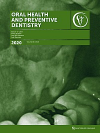Comparison of Fluoride Release in Conventional Glass-Ionomer Cements with a New Mechanical Mixing Cement
Oral Health Prev Dent 18 (2020), No. 2 (01.04.2020)
Open Access ORAL MEDICINE, Page 319-323, doi:10.3290/j.ohpd.a44034
Open Access ORAL MEDICINE, Page 319-323, doi:10.3290/j.ohpd.a44034
Materials and Methods: Samples were measured on days 1, 2, 6, 10, 31, 90 and 180. After 32 and 181 days of monitoring, the samples were recharged by using 1 ml of 2% sodium fluoride gel.
Results: The fluoride release started in high concentration during the first day for all GICs, with a value for GIII of 32.6 ppm. From the 2nd day, a slow, steady decline, with the exception of GII, which showed a marked decline to a value of 3.2 ppm. Analysis of variance (ANOVA) test showed statistically significant differences between the amounts of fluoride of the four materials in the first 24 h. Student t test was used to compare the fluoride release between the first and second recharge in each one of the study groups. Statistically significant differences were found when we compared the fluoride release in groups I (t = –16.95, p = 0.000) and IV (t = –2.644, p = 0.26).
Conclusions: A mechanical mixing was the material with the more constant fluoride release and after recharge showed the highest fluoride release which make it an important benefit for clinicians.

Comments